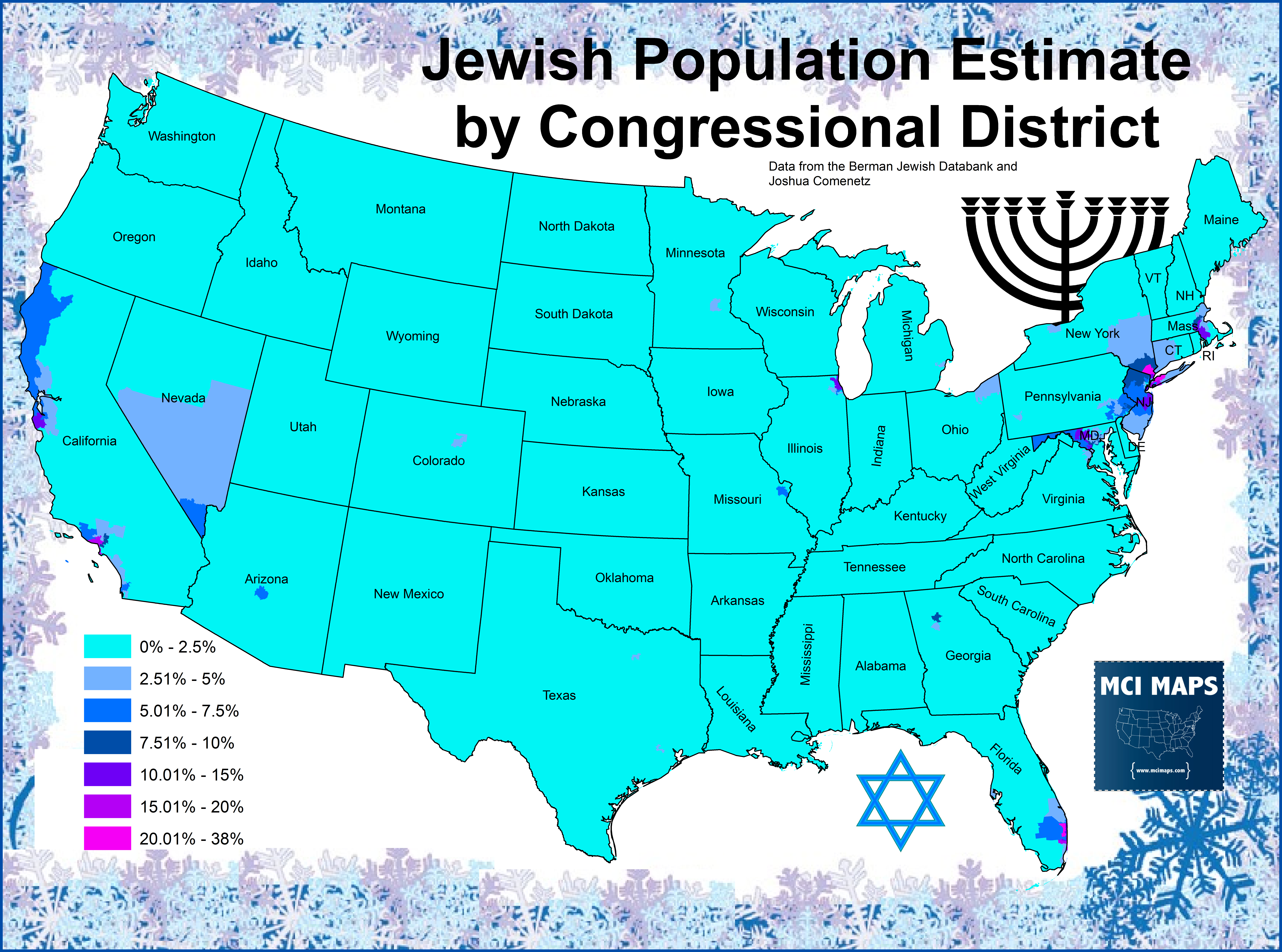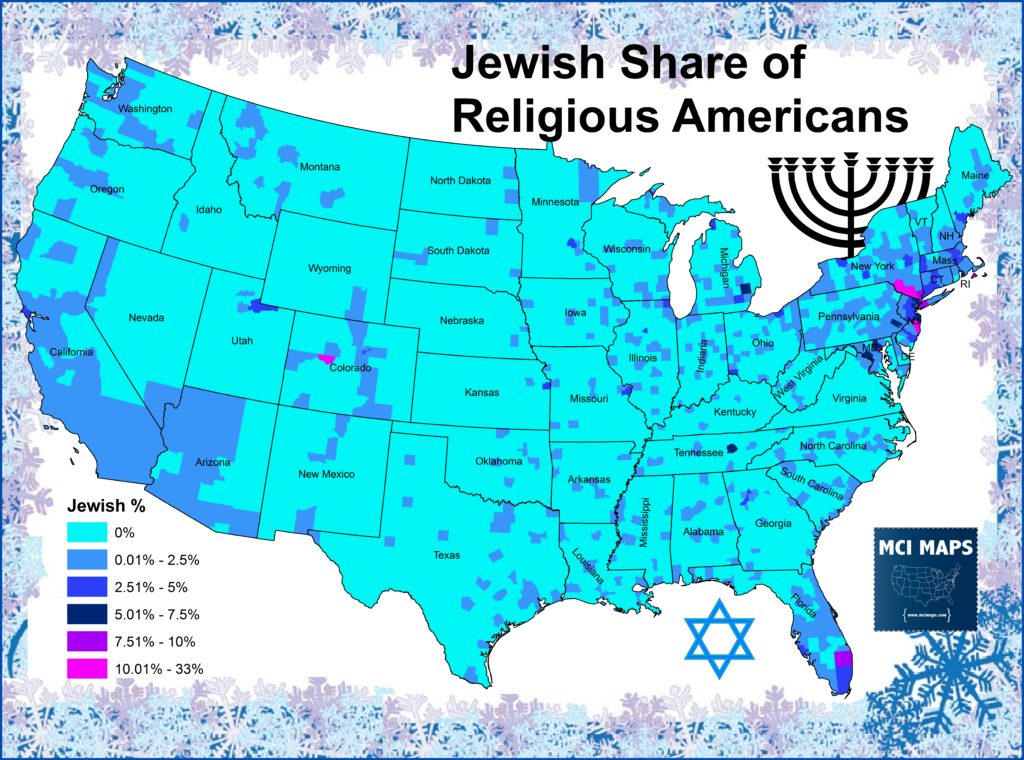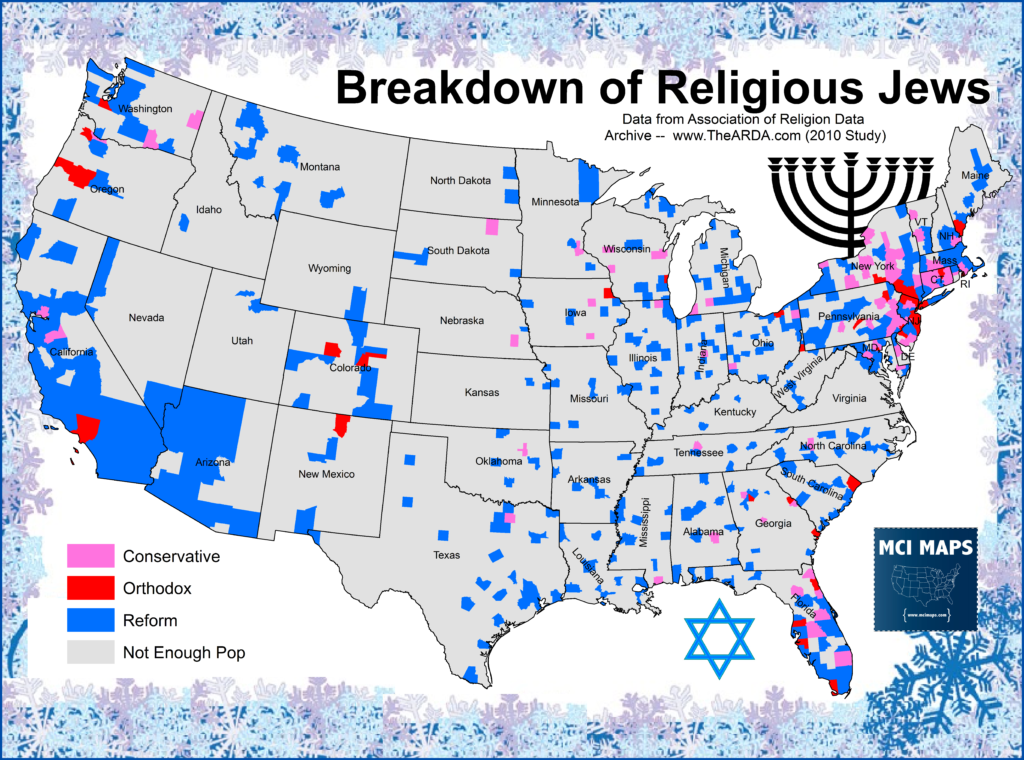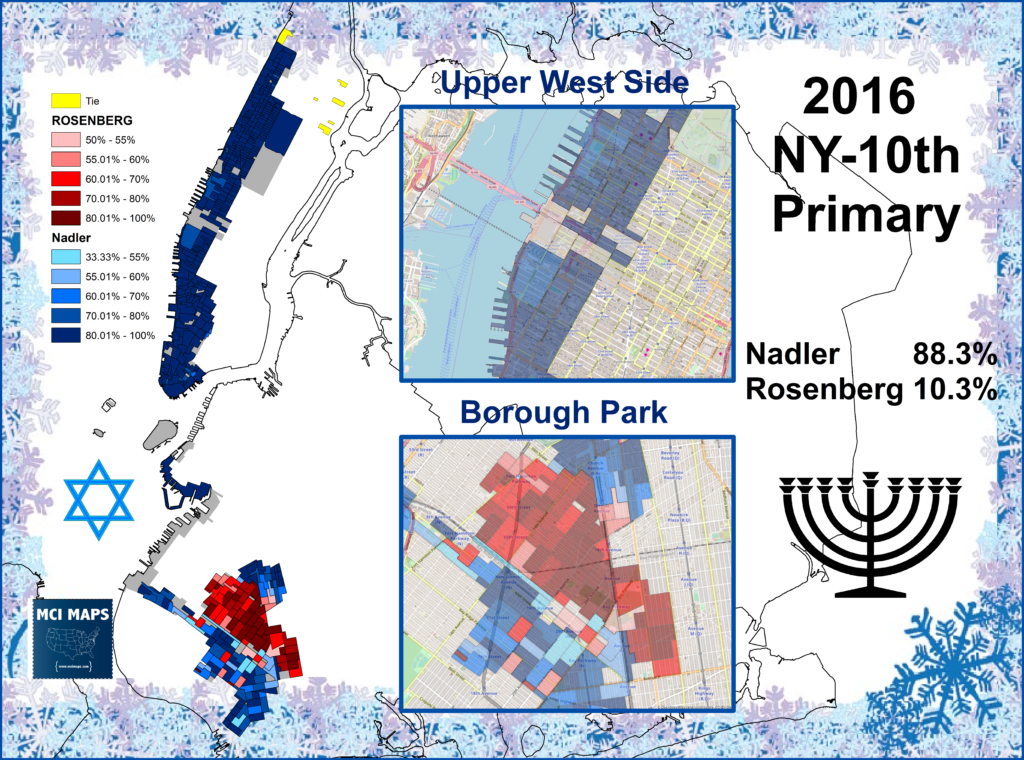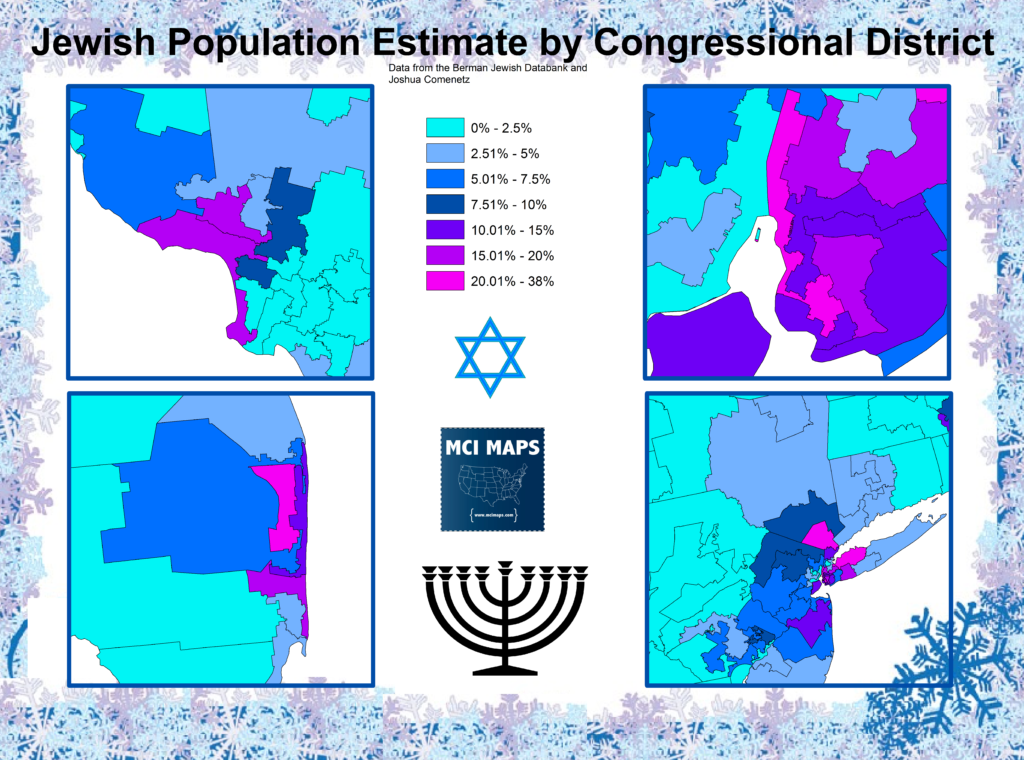December 12th marks the beginning of the 2017 Hanukkah celebration. This holiday marks a holy celebration in the Jewish community of the rededication of the Second Temple. It is also a time for children to create dreidels and menorahs in arts and crafts class (fond memories). To mark the start of this celebration, I decided to take a look at the Jewish population in America.
Clustered Populations
Anecdotally its well-regard that America is filled with areas with relatively little Jewish population, followed by areas that are much more predominantly Jewish. Los Angeles, South Florida, and New York City are often culturally thought of as being a major epicenter of Jewish identity and culture. To a degree this holds up. While Jewish people live in all parts of the United States, at 2.2% of the population, most regions don’t know a large Jewish community or culture. Contrast this with New York City or Palm Beach County; where kosher delis and synagogues are a regular staple of life. It should come as no surprise then to see certain regions of the country stand out when measuring the share of the population that is Jewish.
Religious vs Cultural Jews
There are a few ways to look at measuring the religious share of Americans. No method is perfect and the census does not ask religion. One study was from the Association of Religious Data. They do a census every 10 years the estimate (using research) the total adherents to religions in America. This creates an important distinction. Jews are not defined just as a religion but as a culture as well. Many who identify as Jewish are not religious. Pews detailed report on Jewish beliefs is worth a read. The religious census looked specifically at those who practiced Judaism in a religious sense. The map below aims to show the percent of religious Americans who are religiously Jewish.
Many counties had no notable data to go off of. Meanwhile, NY/NJ and South Florida stand out, as does the DC and Baltimore region.
How these religious Jews break down into the different religious sects of Judaism is also notable. Pew’s study of Jewish opinions showed more identified at reform (35%) than any other. Orthodox Jews only made up 18%. Conservative Jews, who are more moderate than Orthodox, are in third in both instances. However, when only looking at those who are religious adherents, Orthodox outpaces Reform. Orthodox Jews are much more conservative than the rest of Jewish culture and have larger numbers in the NY/NJ area.
The Orthodox split from the rest of Judaism can really be seen in politics. The New York 10th Congressional district, which stands as the most Jewish district in America (37%), had a primary in 2016. Incumbent Jerry Nadler faced a challenger from a newcomer to politics, Oliver Rosenberg, over Nadler’s support for the Iran Deal. Rosenberg argued the deal was bad for Israel, something Nadler strongly disagreed with. The results were a lopsided with for Nadler, except in Borough Park, the Orthodox Jewish community in Brooklyn.
Nadler, while losing Borough Park in a landslide, won across the rest of the district, including the heavily Jewish Upper West Side (which has many more reform Jews). The race highlighted the political split in the Jewish community.
Cultural Population Data
The data above was religious data. The Berman Jewish Databank, meanwhile, did a project to estimate the Jewish population by Congressional district in 2013: looking at people who identify as Jewish on a cultural and religious level. The details are in that link. Their data is visualized below. Note since 2013 some districts have changed. I erased the borders so the visual stands out better.
Key areas instantly stand out: Los Angeles, South Florida, North California, NY/NJ region, Baltimore, and Boston.
Some close ups are below
Only a handful of districts pass the 20% mark. As the map shows though, a vast majority of districts don’t even cross the 2.5% thresh-hold.
These numbers are estimates to be sure, but they give us a clear look at the Jewish community’s clustering in key regions of the nation.
Conclusions
Jewish people in America make up less than 3% of our population. In many parts of the nation, people know of Jewish culture from entertainment or from public figures. Contrast this with South Florida, where the school schedule was structured around having Christian and Jewish Holidays celebrated. American’s understanding and familiarity with this ancient faith is greatly impacted by the area of the nation they grew up in. The clustering of the Jewish population, meanwhile, has also helped ensure their culture and identity remains intact.

